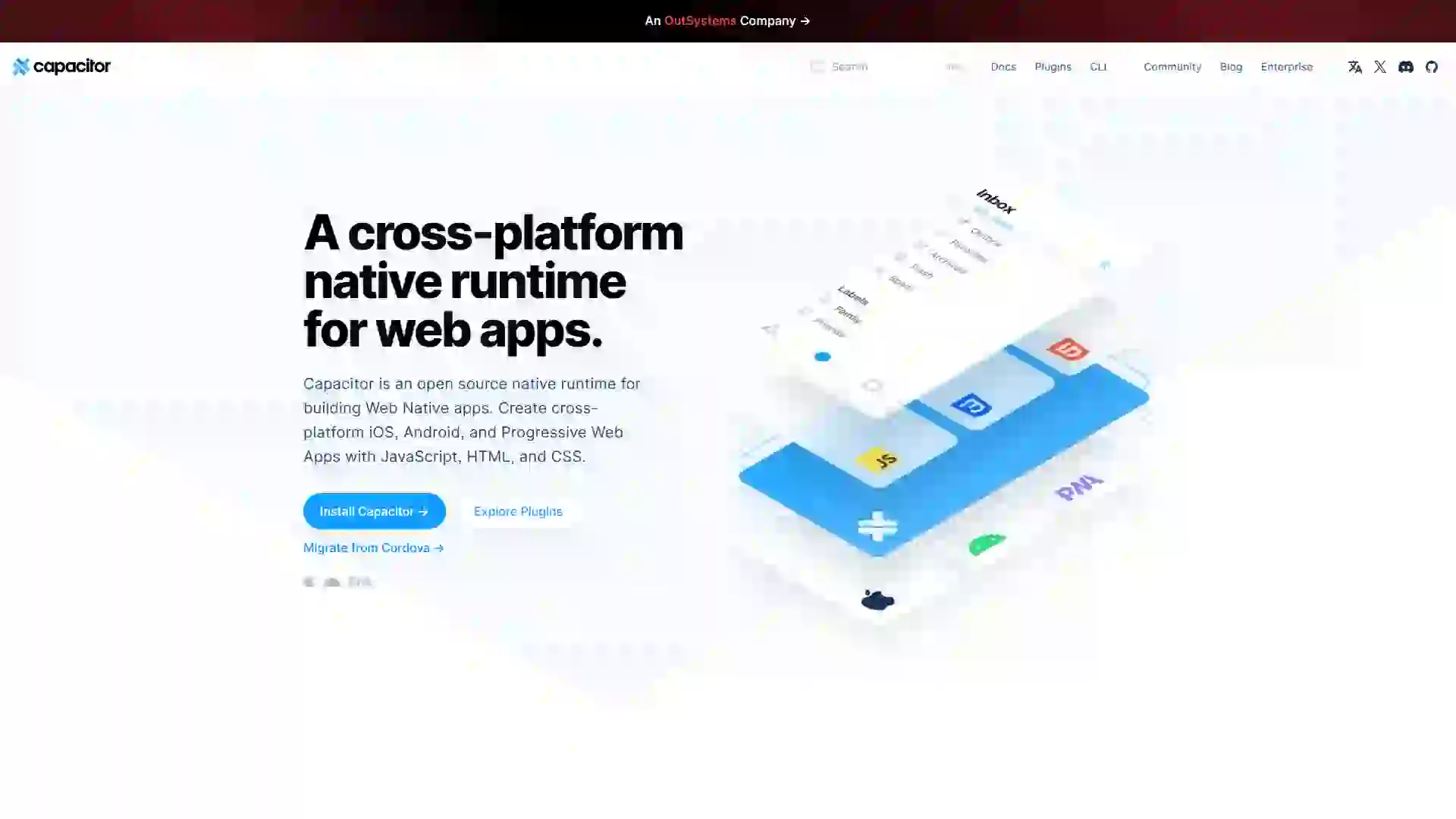- Home
- Development
- CapacitorJS.com
CapacitorJS.com
📝 Summary
CapacitorJS is an innovative, open-source framework designed to seamlessly integrate web applications—such as those built with Next.js—into native mobile applications across iOS, Android, and the web. This powerful tool empowers developers to leverage their existing web development skills to create versatile, cross-platform applications without compromising on functionality or performance.
✨ Features
-
Cross-Platform Compatibility
CapacitorJS supports iOS, Android, and web platforms, allowing developers to write a single codebase that can be deployed across multiple environments. This significantly reduces development time and effort while ensuring consistent user experiences. -
Native API Access
With CapacitorJS's robust plugin system, developers gain easy access to native device features such as the camera, file system, and GPS. This capability enables the creation of feature-rich applications that fully leverage the power of mobile devices. -
Seamless Web Integration
CapacitorJS bridges the gap between web and native development by allowing developers to build native applications using familiar web technologies like React, Vue, and Next.js. There's no need to learn a new programming language, making it an ideal choice for web developers looking to expand into mobile development. -
Flexible Deployment Options
CapacitorJS offers unparalleled flexibility by supporting hybrid deployment of Progressive Web Apps (PWAs) and native applications. This versatility allows developers to choose the best approach for their projects, whether they need full native capabilities or the convenience of web-based deployment.
🎯 Use Cases
-
Cross-Platform Mobile App Development
CapacitorJS is perfect for developers aiming to release applications on both iOS and Android platforms simultaneously. Its cross-platform capabilities ensure a consistent user experience across devices. -
Migrating Web Apps to Native Apps
Teams looking to quickly migrate existing web applications to native mobile platforms will find CapacitorJS to be an efficient and effective solution. It allows for seamless integration and minimal disruption to existing workflows. -
Enhancing Native Functionality
For web applications that require access to native device features such as the camera or GPS, CapacitorJS provides a straightforward way to extend functionality without compromising the core web application.
⚙️ Drawbacks
-
Performance Considerations
While CapacitorJS offers many advantages, it may not match the performance of purely native applications in high-performance scenarios. Developers should carefully evaluate their project requirements to determine if CapacitorJS is the best fit. -
Learning Curve
Developers without prior web development experience may need to invest additional time in learning web technology stacks. However, CapacitorJS's extensive documentation and community support can help ease the learning process.
❓ FAQ
Q1: What are the main features and benefits of CapacitorJS?
A1: CapacitorJS offers cross-platform compatibility, native API access, seamless integration with web technologies, and flexible deployment options. These features enable developers to build versatile applications with minimal learning curve and reduced development time.
Q2: How does CapacitorJS compare to other cross-platform frameworks?
A2: CapacitorJS stands out by focusing on web developers and providing a seamless transition from web to native development. Unlike some alternatives, it doesn't require learning a new language and offers extensive native API access through its plugin system.
Q3: Is CapacitorJS suitable for beginners or professionals?
A3: CapacitorJS is suitable for both beginners and professionals. Beginners can leverage its simplicity and extensive documentation, while professionals can take advantage of its powerful features and flexibility for complex projects.
